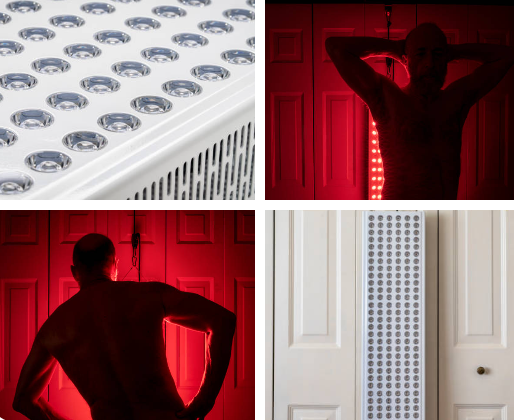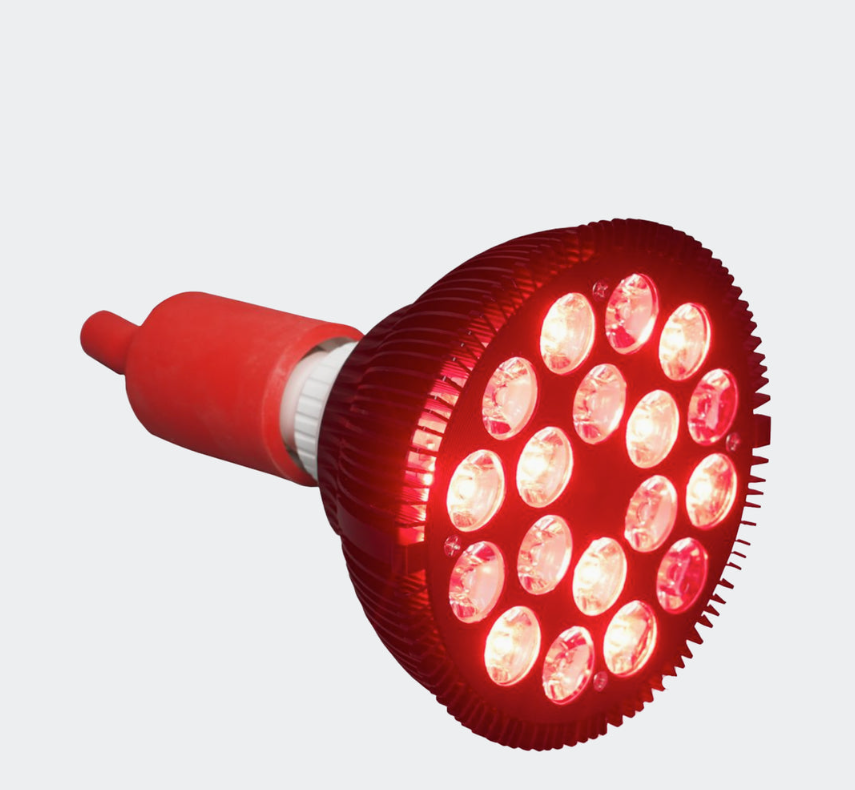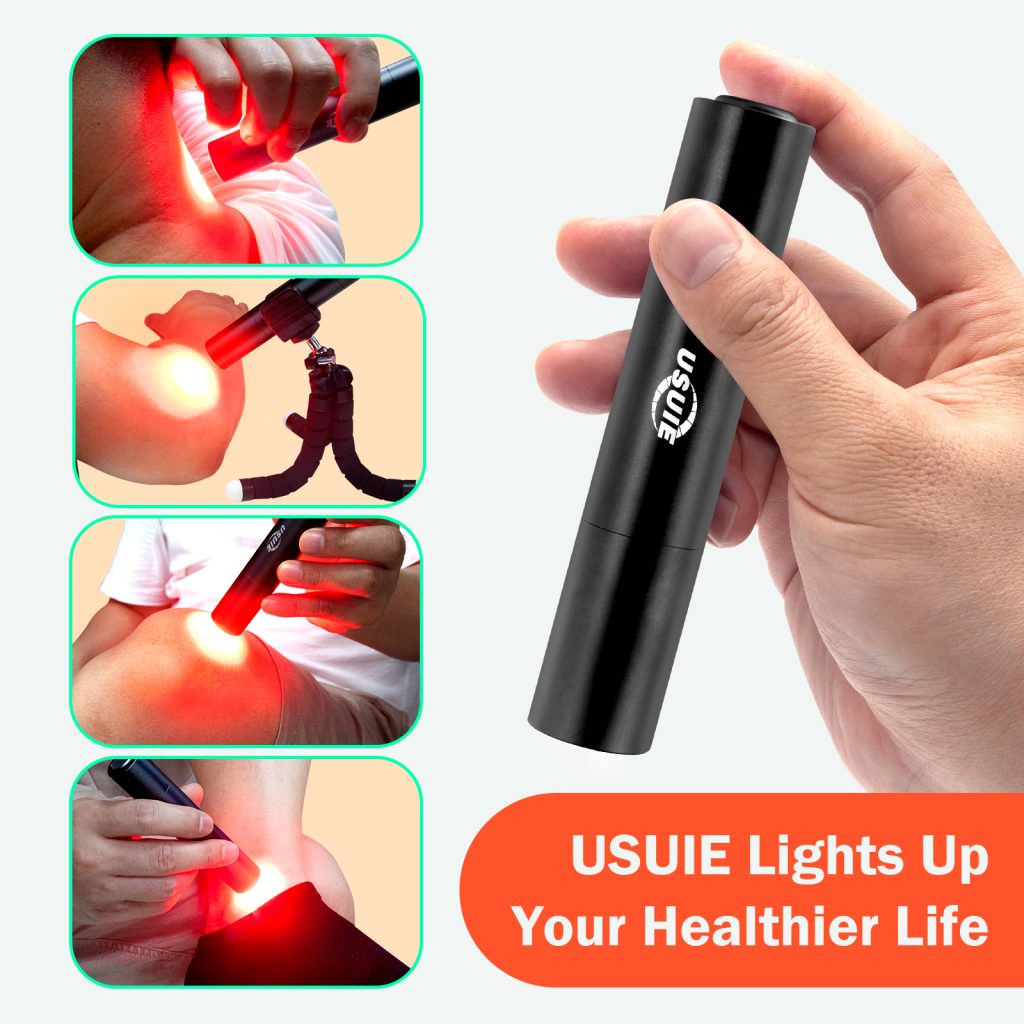Whole-Body Red-Light Therapy is a non-invasive treatment that uses low-level red light wavelengths to stimulate the body’s natural healing process. This therapy often reduces inflammation and pain, improves circulation, and promotes overall wellness. It can be administered using a specialized light bed or panel, and sessions typically last for a few minutes to up to 20 minutes. It is a safe and gentle treatment that can be used with other therapies and treatments for a holistic approach to wellness.
Types of red light therapy devices available for home use
There are several types of red light therapy devices available for home use.

1.Red Light Therapy Panels:
Red light therapy panels are large, flat devices that emit a concentrated beam of red and near-infrared light. These panels often have a variety of settings, allowing users to customize the intensity, duration, and frequency of their treatments. They target larger body areas like the back, thighs, or abdomen. Some panels can be mounted on walls or placed on a stand for ease of use.

2. Red Light Therapy Bulbs:
Red light therapy bulbs are designed to fit standard light sockets, making them easily integrated into existing lamps or fixtures. They emit red and near-infrared light, similar to the panels, but are more suitable for localized treatments on smaller areas, like the face, hands, or feet. These bulbs are cost-effective for those looking to incorporate red light therapy into their daily routine.

3. Handheld Devices:
Handheld red light therapy devices are portable and versatile tools that allow users to target specific areas or muscle groups. They are usually lightweight and contain various attachments, such as domes or massage heads, to facilitate different treatment modalities. Handheld devices are excellent for on-the-go use and can be easily stored when not in use.

4. Red Light Therapy Masks:
Red light therapy masks are specially designed to treat facial skin. These masks are equipped with tiny LED lights that emit red and near-infrared wavelengths. They are comfortable to wear and can be secured using adjustable straps.
Red light therapy masks are famous for promoting collagen production, reducing wrinkles, and improving overall skin texture.

5. Red Light Therapy Pads:
Red light therapy pads are flexible and versatile devices wrapped around different body parts to target specific areas. They are often used for joint pain, muscle soreness, and localized injuries. These portable pads can be easily applied to areas like the knees, shoulders, or elbows, allowing for convenient and targeted treatment.
Tips for safely setting up and using a full-body red light therapy system
Full-body red light therapy systems are a great way to reap the benefits of red light therapy at home. However, safely setting up and using these systems is essential to avoid risks or harm. It is recommended to carefully read and follow the manufacturer’s instructions to ensure safety.
1.Choose a Quality Red Light Therapy System
Invest in a high-quality device from a reputable manufacturer when purchasing a full-body red light therapy system. Look for products that have been FDA-cleared for specific medical uses and ensure they comply with relevant safety standards.
Cheap or uncertified devices may not deliver the desired therapeutic benefits and pose potential safety risks.
2. Read and Follow the Instructions
Before using the red light therapy system:
Read the manufacturer’s instructions and user manual carefully.
Familiarize yourself with the recommended treatment times, distance from the device, and any safety precautions.
Avoid deviating from the guidelines to prevent adverse effects or diminish the treatment’s effectiveness.
3. Start Gradually
If you are new to red light therapy, start with shorter sessions and gradually increase the treatment duration. Beginners should aim for 5 to 10-minute sessions and then extend them as they become more comfortable with the therapy. This approach lets your body adjust to light exposure without overwhelming your cells.
4. Use Protective Eyewear
Full-body red light therapy systems emit intense light, which can harm the eyes. Always wear protective eyewear for red light therapy to shield your eyes during each session. Never look directly at the light source while the system is in operation.
5. Maintain Proper Distance
Position yourself at the recommended distance from the red light therapy device. Different systems may have varying optimal distances, so adhering to the manufacturer’s guidelines is crucial. Being too close or far from the light source can affect the therapy’s effectiveness and safety.
6. Avoid Overuse
While red light therapy can be beneficial, excessive use may lead to adverse effects or negate positive outcomes. Stick to the recommended treatment schedule and avoid using the system more frequently or for longer durations than advised.
7. Monitor Skin Sensitivity
Pay attention to your skin’s response during and after red light therapy sessions. If you experience any unusual redness, irritation, or discomfort, discontinue use and consult a healthcare professional. Red light therapy is considered safe, but individual skin sensitivities may vary.
8. Stay Hydrated
Proper hydration is essential for cellular function and overall well-being. Before and after red light therapy sessions, make sure to drink an adequate amount of water to support your body’s recovery and rejuvenation process.
Before starting a session, it is crucial to thoroughly clean and dry the treatment area to prevent any discomfort or skin irritation. However, setting up and using the system correctly is essential to ensure safety and maximize the therapy’s effectiveness.

Privacy and comfort of using red light therapy in your own home
One of the significant advantages of red light therapy is the privacy and comfort it offers when used in the comfort of your home. Unlike other forms of therapy that require visits to a clinic or spa, red light therapy devices are designed for personal use. It means you can conveniently use them anytime that suits you without worrying about scheduling appointments or facing crowded waiting rooms.
Additionally, using red light therapy at home ensures you have complete privacy. You can relax and enjoy the therapy session without the presence of strangers or the need to expose your body to others in a public setting. It allows for a more comfortable and intimate experience, promoting a sense of ease and tranquility during the treatment.
Conclusion
Regardless of the type, at-home red light therapy devices provide a convenient and cost-effective option for people who want to experience the benefits of this therapy in the comfort of their homes.
By choosing a quality device, reading and following the instructions, using protective eyewear, maintaining proper distance, and monitoring your skin’s response, you can ensure a safe and successful red light therapy experience.
As with any wellness practice, it is always best to consult a healthcare professional before starting red light therapy, especially if you have any underlying health concerns or medical conditions.
